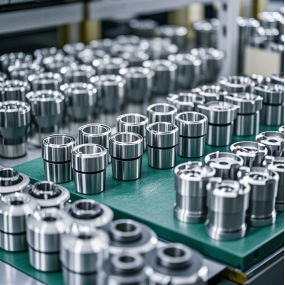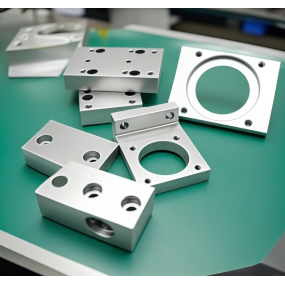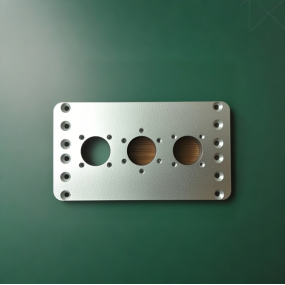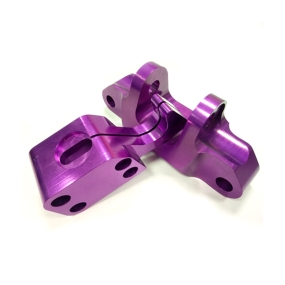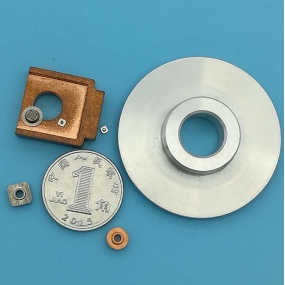1. Optimize the tool path planning of the machining process: High-efficiency cutting strategy: CNC aluminum alloy parts are machined using advanced tool path strategies, such as high-speed circumcision (HSM) or helical milling. High-speed circumcision can make the tool path smoother while maintaining a high cutting speed, reducing the sudden change of cutting force, thereby improving machining efficiency and prolonging tool life. Helical milling can make the tool cut simultaneously in the axial and radial directions. For the relatively soft material of aluminum alloy, it can achieve a large depth of cut and width, reduce the number of processing layers, and effectively shorten the processing time. For example, when machining an aluminum alloy complex curved part, the use of helical milling strategy can reduce the processing time by about 30% compared to traditional layer milling. 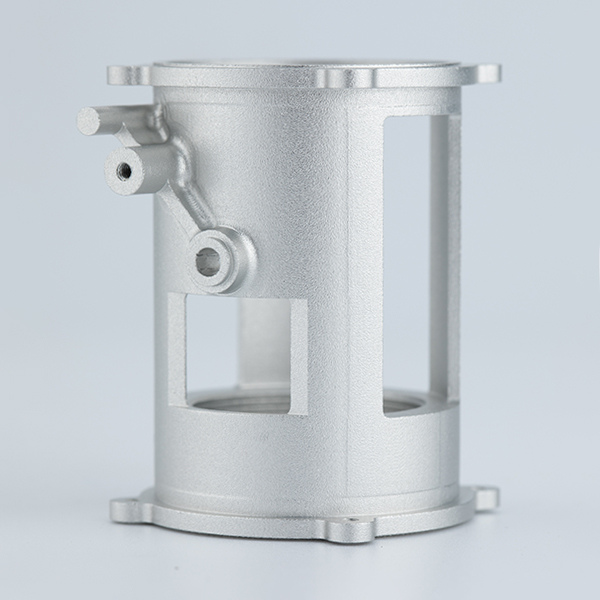 Reduce the empty stroke: CNC aluminum alloy parts machining reduces the empty stroke time of the tool by rationally planning the tool path. When programming, try to make the tool cut continuously in the machining area to avoid unnecessary fast movement and frequent tool change. For example, when machining multiple identical aluminum alloy parts, optimize their machining sequence so that the tool can move to the machining starting position of the next part in the shortest path after completing the machining of one part, thus saving a lot of non-machining time. Cutting Parameter Optimization: Improve the cutting speed and feed: The hardness of aluminum alloy is relatively low and has good cutting performance, so the cutting speed and feed can be appropriately improved. According to the grade of aluminum alloy and the specific requirements of the parts, the best cutting parameters are determined through cutting tests. Generally speaking, the cutting speed can reach 1000 - 3000m/min, and the feed can reach 0.1 - 0.5mm/z. For example, when machining aluminum alloy aviation parts, the cutting speed is increased from the traditional 800m/min to 2000m/min, and the feed amount is reasonably adjusted at the same time, the processing efficiency can be increased by more than 50%. Select the appropriate cutting depth: Under the premise of ensuring the machining accuracy and surface quality of CNC aluminum alloy parts, the cutting depth can be appropriately increased. For roughing, a large cutting depth can be used to quickly remove the allowance; for finishing, the appropriate cutting depth can be determined according to the accuracy requirements and surface roughness requirements of the parts. For example, when roughing aluminum alloy molds, the depth of cutting can be set to 3 - 5mm, while in finishing, the depth of cutting can be controlled in 0.1 - 0.3mm. 2. Adopt advanced processing equipment and technology High-speed machining center: High speed and high feed system: Use a CNC Machining center with high spindle speed and high feed speed. High-speed spindle can achieve higher cutting speed and improve material removal rate. High feed speed can machine more surfaces in unit time and shorten the machining cycle. For example, some high-end CNC machining center spindle speed can reach more than 40000r/min, feed speed can reach more than 60m/min, can significantly improve the processing efficiency when machining aluminum alloy parts. High-precision and high-rigidity structure: The high-precision and high-rigidity structure of the high-speed machining center can ensure the accuracy and stability of the machining. The high-precision coordinate axis positioning system can achieve the processing accuracy of micron level, reducing the repeated processing or correction time caused by the accuracy error. The high-rigidity bed and table can withstand large cutting forces, and will not generate vibration during high-speed cutting, ensuring the processing quality and efficiency. For example, when machining high-precision aluminum alloy electronic parts, the high-precision positioning system of the machining center can control the dimensional accuracy of the parts within 0.01mm, while ensuring the efficient processing speed.
Reduce the empty stroke: CNC aluminum alloy parts machining reduces the empty stroke time of the tool by rationally planning the tool path. When programming, try to make the tool cut continuously in the machining area to avoid unnecessary fast movement and frequent tool change. For example, when machining multiple identical aluminum alloy parts, optimize their machining sequence so that the tool can move to the machining starting position of the next part in the shortest path after completing the machining of one part, thus saving a lot of non-machining time. Cutting Parameter Optimization: Improve the cutting speed and feed: The hardness of aluminum alloy is relatively low and has good cutting performance, so the cutting speed and feed can be appropriately improved. According to the grade of aluminum alloy and the specific requirements of the parts, the best cutting parameters are determined through cutting tests. Generally speaking, the cutting speed can reach 1000 - 3000m/min, and the feed can reach 0.1 - 0.5mm/z. For example, when machining aluminum alloy aviation parts, the cutting speed is increased from the traditional 800m/min to 2000m/min, and the feed amount is reasonably adjusted at the same time, the processing efficiency can be increased by more than 50%. Select the appropriate cutting depth: Under the premise of ensuring the machining accuracy and surface quality of CNC aluminum alloy parts, the cutting depth can be appropriately increased. For roughing, a large cutting depth can be used to quickly remove the allowance; for finishing, the appropriate cutting depth can be determined according to the accuracy requirements and surface roughness requirements of the parts. For example, when roughing aluminum alloy molds, the depth of cutting can be set to 3 - 5mm, while in finishing, the depth of cutting can be controlled in 0.1 - 0.3mm. 2. Adopt advanced processing equipment and technology High-speed machining center: High speed and high feed system: Use a CNC Machining center with high spindle speed and high feed speed. High-speed spindle can achieve higher cutting speed and improve material removal rate. High feed speed can machine more surfaces in unit time and shorten the machining cycle. For example, some high-end CNC machining center spindle speed can reach more than 40000r/min, feed speed can reach more than 60m/min, can significantly improve the processing efficiency when machining aluminum alloy parts. High-precision and high-rigidity structure: The high-precision and high-rigidity structure of the high-speed machining center can ensure the accuracy and stability of the machining. The high-precision coordinate axis positioning system can achieve the processing accuracy of micron level, reducing the repeated processing or correction time caused by the accuracy error. The high-rigidity bed and table can withstand large cutting forces, and will not generate vibration during high-speed cutting, ensuring the processing quality and efficiency. For example, when machining high-precision aluminum alloy electronic parts, the high-precision positioning system of the machining center can control the dimensional accuracy of the parts within 0.01mm, while ensuring the efficient processing speed.
Hello! Welcome to EMAR's website!
 English
English » »
» »
 Spanish
Spanish Arabic
Arabic French
French Portuguese
Portuguese Belarusian
Belarusian Japanese
Japanese Russian
Russian Malay
Malay Icelandic
Icelandic Bulgarian
Bulgarian Azerbaijani
Azerbaijani Estonian
Estonian Irish
Irish Polish
Polish Persian
Persian Boolean
Boolean Danish
Danish German
German Filipino
Filipino Finnish
Finnish Korean
Korean Dutch
Dutch Galician
Galician Catalan
Catalan Czech
Czech Croatian
Croatian Latin
Latin Latvian
Latvian Romanian
Romanian Maltese
Maltese Macedonian
Macedonian Norwegian
Norwegian Swedish
Swedish Serbian
Serbian Slovak
Slovak Slovenian
Slovenian Swahili
Swahili Thai
Thai Turkish
Turkish Welsh
Welsh Urdu
Urdu Ukrainian
Ukrainian Greek
Greek Hungarian
Hungarian Italian
Italian Yiddish
Yiddish Indonesian
Indonesian Vietnamese
Vietnamese Haitian Creole
Haitian Creole Spanish Basque
Spanish Basque


